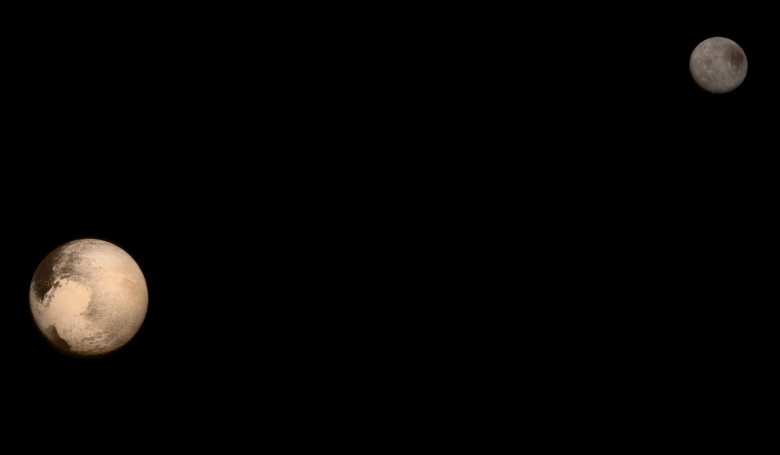Given its icy outward appearance and its distance from the Sun, it is hard to imagine Pluto as anything but frozen to the core since it formed. However, that idea might be as far removed from fact as the dwarf planet is from daylight, as according to new research Pluto may have been relatively hot in the beginning and had a subsurface liquid ocean early in its development; a finding that has implications for oceans on other large Kuiper belt objects.
It is generally assumed that Pluto, the far-flung dwarf planet with a giant heart emblazoned on one side, came together as lots of cold material accreted into a huge icy ball.
This material is likely to have been at or beyond the ‘snowline’, in a protoplanetary disk, where carbon monoxide, and other compounds such as water condense into solid ice particles; if formation begins too close to the centre of the disk, heat from the evolving star stops material from freezing.
Once it became a giant snowball, a subsurface ocean started to develop due to warming from radioactive decay. Growing a planet from accretion is how all planets are thought to form, though there is a lot of disagreement as to how long this processes lasts.
Thanks to the New Horizons flyby of the Pluto-Charon system, scientists were able to determine that Pluto is marked by many troughs and scarps that cut across the planet’s surface – some of which hundreds of kilometers (km) long and up to 4 km deep.
These deformation stresses have been interpreted as extensional faults and are caused when water expands as it freezes to ice; a feature that is common to planets and moons that form from a ‘cold start”.
It follows then that if Pluto started off cold, then it’s ice shell would have experienced early compression then more recent extension, due to the volume change of water as it freezes, say Carver Bierson and Francis Nimmo of the University of California Santa Cruz and S. Alan Stern of the Southwest Research Institute, Boulder, who have scrutinised high-resolution images of these features on Pluto.
But that is not what this trio find.
After comparing thermal model simulations of the evolution of Pluto’s interior to geological observations gathered from New Horizons, the trio found that the generated compressional stresses are not consistent with the structures observed on Pluto’s surface.
In contrast, if Bierson, Nimmo and Stern, who also happens to be the principle investigator of the New Horizons mission, give Pluto a ‘hot’ beginning, Pluto produces an early, rapid phase of extension, followed by a more prolonged extensional phase.
This would have left features that resemble a ridge–trough system - the type that was recently identified on Pluto, say the trio.
How likely is it that Pluto, a giant icy snowball started off hot though? If the final stage of Pluto’s accretion took place in less than 30 thousand years, the gravitational energy released during accretion would provide the necessary heat to provide the hot initial start say Bierson and colleagues.
Furthermore, this study suggests that all larger dwarf planets in the Kuiper belt, started off with liquid water oceans and some “will probably have undergone extensive reactions with the warm silicates beneath,” the authors write in their research paper published in Nature Geoscience today.
The potential habitability of distant icy worlds increases when subsurface oceans interact with compounds on a sea-floor.
Jupiter’s moon Europa – which is larger than Pluto – is another example of where scientists think this process might be currently occurring and is why the smallest of the Galilean moons has attracted a lot of attention from an astrobiological perspective.
The team also calculate that hot starts are probably relevant only for bodies of roughly half Pluto’s radius or more.
As Pluto’s moon Charon is half Pluto’s radius, and as it doesn’t have any compressional features, it implies that Charon also underwent a hot start. Though in Charon’s case the ocean is not expected to have survived to the present day, say the trio.
Further testing of their hot-start model is now being investigated, but say the team, their model provides answers to why some Kuiper Belt Objects (KBO) grow so big - a problem that traditional models for KBO formation cannot reconcile.
If you've enjoyed reading this article, please consider subscribing to ROOM Space Journal to gain immediate and full access to the latest magazine feature articles and receive your own print and/or digital copies of the quarterly ROOM magazine delivered electronically or direct to your door











